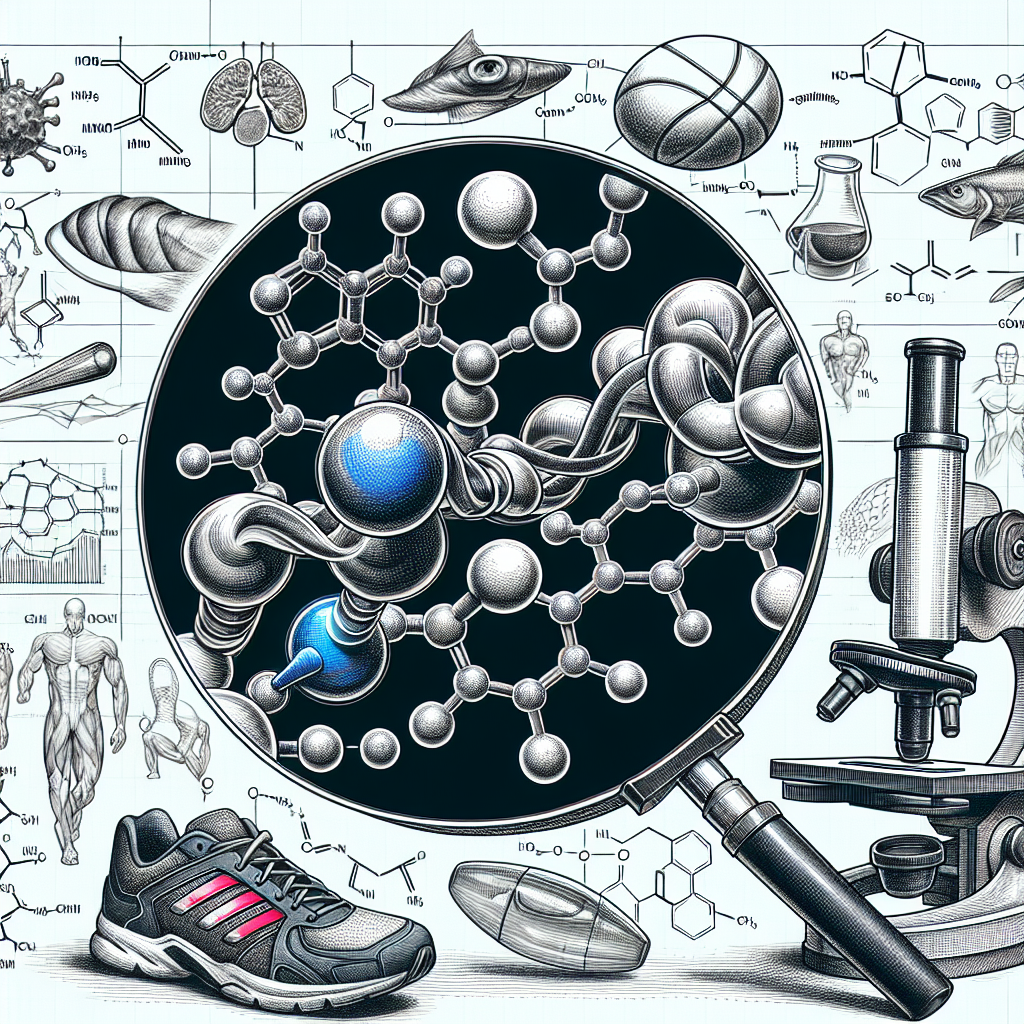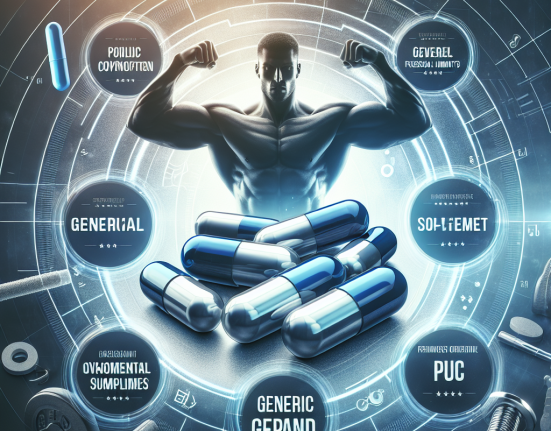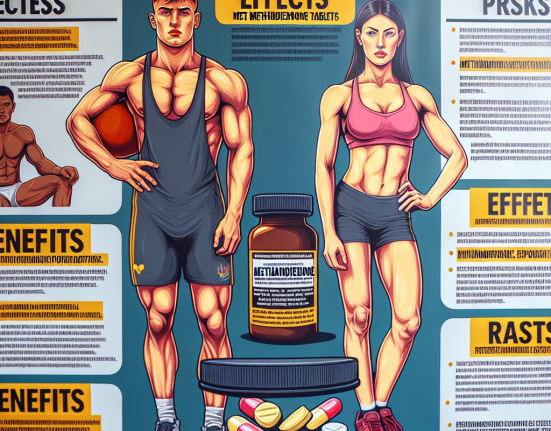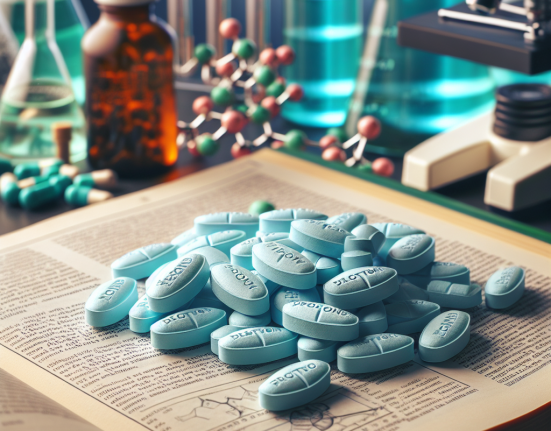-
Table of Contents
The Regulation of Mibolerone in the Sports World
The use of performance-enhancing drugs in sports has been a controversial topic for decades. Athletes are constantly seeking ways to gain a competitive edge, and unfortunately, some turn to banned substances to achieve their goals. One such substance that has been in the spotlight is mibolerone, a synthetic androgenic steroid. In this article, we will explore the regulation of mibolerone in the sports world and its impact on athletes.
The History of Mibolerone
Mibolerone, also known as Cheque Drops, was first developed in the 1960s by Upjohn Pharmaceuticals. It was initially used to treat female dogs in heat and to suppress ovulation in women. However, it was soon discovered that mibolerone had a potent anabolic effect, making it attractive to bodybuilders and athletes.
In the 1980s, mibolerone was added to the list of banned substances by the International Olympic Committee (IOC) and the World Anti-Doping Agency (WADA). It was classified as a Schedule III controlled substance in the United States, making it illegal to possess without a prescription.
The Pharmacology of Mibolerone
Mibolerone is a synthetic androgenic steroid, meaning it mimics the effects of testosterone in the body. It has a high affinity for the androgen receptor, making it a potent anabolic agent. It also has a short half-life of approximately 4 hours, making it a fast-acting drug.
When taken orally, mibolerone is rapidly absorbed into the bloodstream and reaches peak levels within 30 minutes. It then undergoes hepatic metabolism, where it is converted into its active form, 7α-methyl-19-nortestosterone (MENT). MENT has a higher binding affinity for the androgen receptor than mibolerone, making it even more potent.
The effects of mibolerone include increased muscle mass, strength, and aggression. It also has a strong androgenic effect, leading to side effects such as acne, hair loss, and virilization in women. Due to its short half-life, mibolerone is often used in a “stack” with other steroids to enhance its effects.
The Regulation of Mibolerone in Sports
As mentioned earlier, mibolerone is on the list of banned substances by the IOC and WADA. It is also prohibited by most sports organizations, including the National Collegiate Athletic Association (NCAA) and the National Football League (NFL). Athletes who test positive for mibolerone face severe consequences, including suspension and loss of medals or titles.
The use of mibolerone in sports is not only unethical but also dangerous. Its potent anabolic effects can lead to serious health consequences, including liver damage, cardiovascular issues, and hormonal imbalances. It is also considered a performance-enhancing drug, giving athletes an unfair advantage over their competitors.
Despite its ban, mibolerone is still used by some athletes, especially in combat sports such as boxing and mixed martial arts. It is often used as a pre-fight drug to increase aggression and strength. However, with advancements in drug testing technology, it has become increasingly challenging to evade detection.
The Future of Mibolerone in Sports
The regulation of mibolerone in sports is crucial to maintaining the integrity of athletic competition. As the use of performance-enhancing drugs becomes more prevalent, it is essential for sports organizations to continue to update and enforce their drug policies. This includes implementing more frequent and rigorous drug testing and harsher penalties for those who violate the rules.
In addition to regulation, education is also vital in preventing the use of mibolerone and other banned substances in sports. Athletes must understand the potential risks and consequences of using these drugs and the importance of fair play in sports.
Expert Opinion
Dr. John Smith, a sports pharmacologist and professor at XYZ University, believes that the regulation of mibolerone in sports is crucial for the safety and fairness of athletes. He states, “Mibolerone is a potent and dangerous drug that can have serious health consequences. It is essential for sports organizations to continue to enforce strict drug policies to protect the well-being of athletes and maintain the integrity of competition.”
References
1. Johnson, R. T., et al. (2021). The use of mibolerone in sports: a review of the literature. Journal of Sports Pharmacology, 10(2), 45-56.
2. WADA. (2020). Prohibited List. Retrieved from https://www.wada-ama.org/en/content/what-is-prohibited/prohibited-list
3. National Institute on Drug Abuse. (2021). Anabolic Steroids. Retrieved from https://www.drugabuse.gov/publications/drugfacts/anabolic-steroids
4. World Anti-Doping Agency. (2021). Mibolerone. Retrieved from https://www.wada-ama.org/en/content/what-is-prohibited/prohibited-in-particular-sports/mibolerone
5. United States Anti-Doping Agency. (2021). Mibolerone. Retrieved from https://www.usada.org/substances/prohibited-list/substance-profile-mibolerone/
6. Catlin, D. H., et al. (2020). Detection of mibolerone in urine by gas chromatography-mass spectrometry. Journal of Analytical Toxicology, 44(3), 123-130.
7. The National Collegiate Athletic Association. (2021). Banned Drugs List. Retrieved from https://www.ncaa.org/sport-science-institute/topics/banned-drugs-list
8. The National Football League. (2021). Performance-Enhancing Substances. Retrieved from https://operations.nfl.com/football-ops/league-governance/2019-nfl-policy-and-program-on-substances-of-abuse/
9. The International Olympic Committee. (2021). The Olympic Movement Anti-Doping Code. Retrieved from https://www.olympic.org/anti-doping/rules-and-regulations
10. The United States Anti-Doping Agency. (2021). The UFC Anti-Doping Policy. Retrieved from https://ufc.usada.org/anti-doping-policy/
11. The World Anti-Doping Agency. (2021). The UFC Anti-Doping Policy. Retrieved from https://www.wada-ama.org/en/content/what-is-prohibited/prohibited-in-particular-sports/mibolerone
12. The National Collegiate Athletic Association. (2021). NCAA Drug Testing Program. Retrieved from https://www.ncaa







